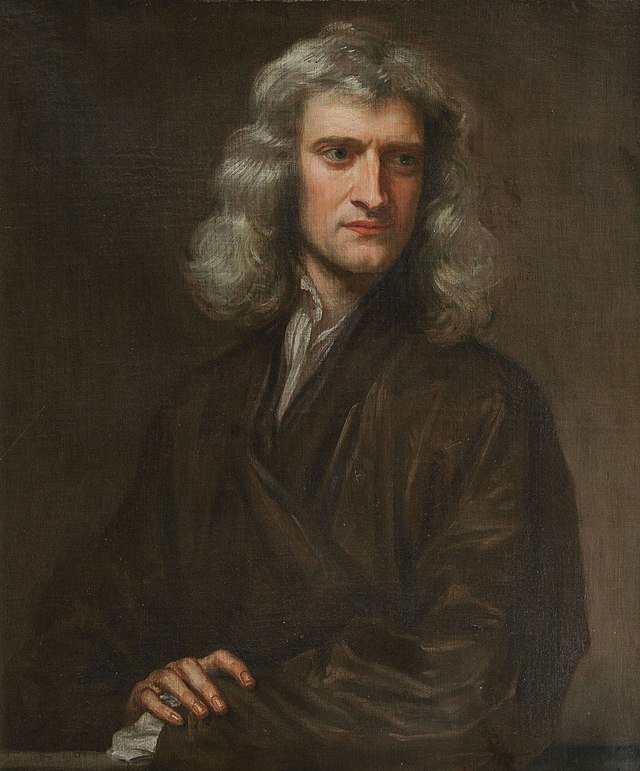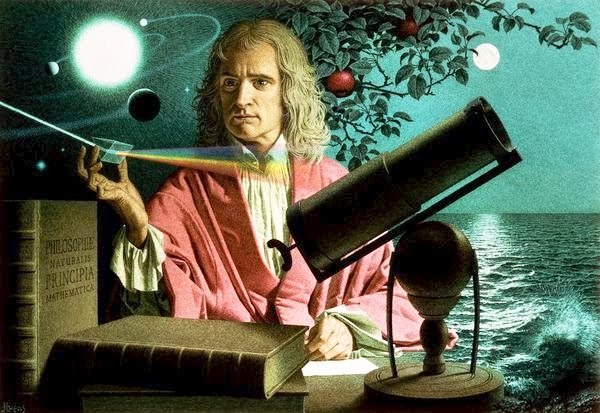
Sir Isaac Newton, one of the foremost scientific minds in history, was born on January 4, 1643, in Woolsthorpe, Lincolnshire, England. His childhood was marked by a curious mind and an innate interest in the natural world. Newton’s early education at the King’s School in Grantham laid the foundation for his future intellectual pursuits. It was during these formative years that he demonstrated an exceptional aptitude for mathematics and physics.
Newton’s thirst for knowledge extended beyond the conventional curriculum. His inquisitive nature led him to explore the works of ancient philosophers, such as Aristotle and Euclid, laying the groundwork for his later groundbreaking contributions to science. Despite facing financial challenges, Newton’s academic brilliance caught the attention of university officials, eventually earning him a place at Trinity College, Cambridge, in 1661.
As a student, Newton delved into various branches of mathematics, optics, and astronomy. His groundbreaking work on calculus, developed independently of Leibniz, revolutionized the field of mathematics and provided a powerful tool for describing the motion of objects. The seeds of his future discoveries were sown during his early years, setting the stage for the scientific revolution that would unfold in the years to come.
Genesis of the Principia: Newton’s Groundbreaking Work
The Principia Mathematica, published in 1687, stands as a monumental achievement in the annals of scientific literature. Newton’s journey to this magnum opus began with a confluence of intellectual curiosity and methodical brilliance. The genesis of the Principia can be traced back to Newton’s intense period of intellectual ferment during the mid-1660s, often referred to as his “miraculous year.”
Driven by a relentless pursuit of understanding the fundamental laws governing the physical world, Newton explored the realms of mathematics, optics, and celestial mechanics. The culmination of his efforts was the groundbreaking development of calculus, a mathematical framework that provided him with the tools to articulate his revolutionary ideas. Newton’s manuscript “De Analysi” laid the groundwork for the Principia, setting the stage for the synthesis of disparate threads into a unified theory of mechanics and gravitation.
Unraveling the Laws of Motion
F = m * a
Newton’s second law of motion
At the core of the Principia Mathematica are Newton’s three laws of motion, which transformed our understanding of how objects move and interact. The first law states that an object at rest will remain at rest, and an object in motion will stay in motion unless acted upon by an external force. The second law introduces the concept of force, stating that the force acting on an object is equal to the mass of the object multiplied by its acceleration. The third law asserts that for every action, there is an equal and opposite reaction.
These laws formed the bedrock of classical mechanics, providing a systematic framework for describing the motion of objects on Earth and beyond. The elegance and simplicity of Newton’s laws marked a departure from previous explanations, ushering in a new era of scientific inquiry. The precision and generality of these laws enabled scientists to predict and understand the motion of celestial bodies, laying the groundwork for the subsequent advancements in physics.
Universal Gravitation: Connecting the Cosmos
Newton’s crowning achievement within the Principia was the formulation of the law of universal gravitation. Building upon the astronomical observations of Kepler and the conceptual groundwork laid by Galileo, Newton proposed that every particle of matter in the universe attracts every other particle with a force directly proportional to the product of their masses and inversely proportional to the square of the distance between their centers.
This law not only explained the motion of celestial bodies but also provided a unifying framework for understanding the forces at play both on Earth and in the heavens. The law of universal gravitation demonstrated that the same principles govern the fall of an apple and the orbits of planets.
Unraveling the Mystical Mind: Alchemical Works
Newton’s interest in alchemy was not a mere dalliance; rather, it was a serious and sustained pursuit that spanned several decades of his life. His alchemical manuscripts, totaling in the thousands of pages, showcase a complex interplay of symbolism, obscure language, and cryptic diagrams. Newton’s alchemical endeavors were not disconnected from his scientific work; instead, they reflected a holistic approach to understanding the natural world.
In these mystical pursuits, Newton sought not only the transformation of base metals into gold but also a deeper understanding of the hidden forces governing the cosmos. The allegorical language of alchemy allowed him to express ideas about the nature of matter, the interconnectedness of elements, and the quest for spiritual enlightenment. For Newton, alchemy was a symbolic language that complemented his mathematical and scientific endeavors.
The intertwining of alchemy with Newton’s scientific pursuits raises intriguing questions about the interconnectedness of seemingly disparate fields. While his alchemical works did not contribute directly to the advancements in physics, they offer a unique window into the mind of a genius who saw the pursuit of knowledge as a seamless tapestry, weaving together the empirical and the mystical.
In conclusion, Newton’s ventures into alchemy and mysticism underscore the complexity of his intellectual character. Beyond the well-known achievements in mathematics and physics, his exploration of the arcane arts reveals a man driven by an insatiable curiosity that transcended the boundaries of traditional scholarship. Newton’s legacy extends beyond the Principia Mathematica, encompassing a broader spectrum of human inquiry that reflects the intricate tapestry of his intellectual pursuits.
The Newtonian Revolution: Transforming Science

The Newtonian Revolution stands as a pivotal chapter in the history of science, reshaping the way humanity perceives and investigates the natural world. Sir Isaac Newton’s profound contributions to physics and mathematics during the 17th century marked a paradigm shift that laid the groundwork for the modern scientific method. Newton’s magnum opus, the Principia Mathematica, not only provided a comprehensive framework for understanding the laws of motion and universal gravitation but also established a new standard for scientific inquiry.
At the heart of the Newtonian Revolution was a commitment to empiricism and mathematical precision. Newton’s laws of motion and the law of universal gravitation were not speculative theories but elegant expressions of natural phenomena grounded in rigorous observation and mathematical formulation. This emphasis on empirical evidence and mathematical rigor became the hallmark of the scientific method, guiding future generations of scientists in their quest for understanding.
Newton’s methodology encompassed the systematic observation of the physical world, the formulation of mathematical models to describe observed phenomena, and the testing of these models through experimentation. This approach represented a departure from the speculative reasoning prevalent in earlier scientific traditions, establishing a foundation upon which the scientific method would evolve and flourish.
Influence on Subsequent Generations: Newtonian Legacy
Newton’s legacy extends far beyond his own lifetime, influencing subsequent generations of scientists and thinkers. The Newtonian paradigm became a cornerstone of the Enlightenment, a period characterized by a commitment to reason, empirical observation, and the pursuit of knowledge. The scientific method, as exemplified by Newton, became a template for inquiry in various disciplines, fostering a culture of systematic investigation and intellectual rigor.
The impact of Newton’s ideas resonated across diverse fields, from physics and astronomy to philosophy and beyond. His principles not only advanced our understanding of the physical universe but also inspired a broader societal shift towards valuing evidence-based reasoning. Newton’s legacy became intertwined with the very fabric of modernity, shaping the intellectual landscape of the centuries that followed.
In the realm of physics, Newton’s laws provided a robust foundation upon which subsequent theories, such as those of Albert Einstein, would build. The concept of universal gravitation, while later refined, remains a fundamental part of our understanding of celestial mechanics.
Beyond the scientific realm, Newton’s influence extended into philosophy, where his emphasis on empirical observation and the scientific method laid the groundwork for the empiricist tradition. The Enlightenment ideals of reason, progress, and the pursuit of knowledge owe a debt to Newton’s intellectual legacy.
In conclusion, Newton’s legacy is not confined to equations and theorems; it permeates the very fabric of the scientific method and the broader intellectual ethos of modern civilization. The Newtonian Revolution transformed science from a speculative pursuit into a disciplined, evidence-based inquiry, shaping the trajectory of human understanding and paving the way for the remarkable scientific advancements of subsequent centuries.
